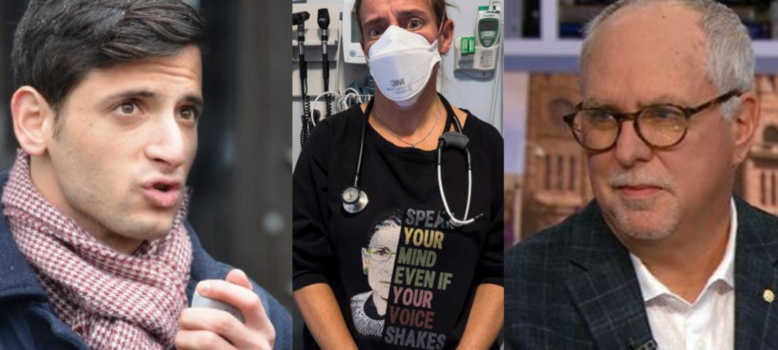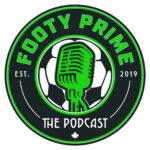
The Rise of Culture Wars: How Polarizing Protests are Dividing Communities in Ontario

My time spent observing and documenting the burgeoning protest circuit across Ontario over the past two years has been enlightening.
With boots on the ground, it became apparent there were familiar faces in different cities. Some protesters travel hundreds of kilometres to organize and participate in a variety of public demonstrations. The causes have varied, but the key players not so much.
I think it’s time to go home ☺️#FreedomConvoy #Ottawa pic.twitter.com/cgyoJcILOE
— Caryma Sa'd – Lawyer + Political Satirist (@CarymaRules) February 20, 2022
My first year and a half was spent almost exclusively among “convoy” protesters. I witnessed a lot of chaos, including protests outside hospitals and vaccine clinics, impromptu rallies that blocked traffic, mobs swarming shopping malls, and a restaurant under weekly siege. I worried about the increasingly fed-up general public resorting to retaliatory vigilantism in the face of a consistently milquetoast police response.
Kelly Anne Wolfe pleads with #antivaxxers to get away from the Eaton Centre. Here’s the thing about mobs: they’re (relatively) easy to rile up, yet hard to control.
At the end, Nick Smith may have stolen a guard’s badge. He taunts, “There’s one for me, none for you!”#cdnpoli pic.twitter.com/NTtlQYW7ap
— Caryma Sa'd – Lawyer + Political Satirist (@CarymaRules) September 25, 2021
Last year, a new dynamic arose. The convoy’s attempted shutdown of cities and border crossings in Canada changed the landscape and fulfilled my prediction by spawning groups of “antifaux” (wannabe or pretend antifascist) protesters.
I am the Canadian-born daughter of a Palestinian refugee, exercising my right to document a public event on the sidewalk.
I have freedom of thought, association, and expression.
I will never capitulate to a self-righteous fake ACAB white man wearing a mass produced keffiyeh. pic.twitter.com/vMel76FzbV
— Caryma Sa'd – Lawyer + Political Satirist (@CarymaRules) December 20, 2022
I see no equivalence between far right (fascist) & left (antifascist) ideology.
Fascism posits the needs of an in-group over the rest of humanity, justifying wanton oppression; antifascism opposes this.
My issue is “antifascists” who prioritize role-play over principled action. pic.twitter.com/sM3jakyo0W
— Caryma Sa'd – Lawyer + Political Satirist (@CarymaRules) December 23, 2022
Nowadays, these opposing groups have branched out into different arenas, endlessly confronting each other. There is no longer a middle ground. Critical thinkers seeking nuance risk a barrage of harassment. A never-ending clown show, at best, or attacked by both sides, at worst.
The Interplay between Online and Real World Culture War Battlefronts
Fundamentally, the conflict between convoy and antifaux is about defining public life. Make no mistake, these are culture wars. The red, blue, orange, green, and purple political teams each have soldiers at play. And anarchists, too. The battles occur online and in the physical realm.
Here’s how it works:
It starts with a real or manufactured crisis. It can be about anything, though some issues galvanize better than others. Networks of likeminded people publish colourful flyers inviting supporters to build community (in-group) through confrontation against the enemy (out-group). These callouts inevitably attract keyboard warriors who want to cosplay as heroes. Their entry in turn solidifies the other side’s intent to show up and counter the planned activities.
Each group acts as a foil to the other. Rhetoric becomes exaggerated: This is an urgent, existential crisis. We must protect the kids from the fascists/woke onslaught. We are the good guys, they are evil.
Ordinary, well-intentioned local community members on either part of the divide get caught up in the frenzy of a simplistic good vs. evil narrative. People form bonds which are reinforced through online communication. Casuals become regulars, while regulars grow increasingly radical.
Escalating behaviour erodes norms surrounding decency and civility. The cycle repeats itself ad nauseam. Thus, it should come as no surprise when actual violence ensues.
The OCDSB Fiasco: A Case Study in Culture Wars and Political Propaganda
Consider the recent Ottawa Carleton District School Board (OCDSB) fiasco as a case study:
In early March 2023, OCDSB Trustee Dr. Nili Kaplan-Myrth interrupted parent Nick Morabito as he attempted to speak at a Board meeting, on the grounds that his delegation about the washroom inclusion policy created “an unsafe environment for people who identify as gender diverse.” Subsequently, the video of him being cut short went viral. It generated outrage about amorphous concepts like “harm” and “safety” being used to stifle democratic expression.
Ottawa progressive public school trustee Dr. Nili Kaplan Myrth shut down a concerned parent speaking at a yesterday’s board meeting “on the grounds that (his speech created) an unsafe environment for people who identify as gender diverse.”
Source: Robin Larocque, YouTube pic.twitter.com/2vXM3yJrbS— Élie Cantin-Nantel (@elie_mcn) March 8, 2023
Following her controversial judgment call, the trustee was bombarded with praise, criticism and shocking abuse, including an anonymous death threat, the latest in a series of cartoonishly vile and explicit hate mail. An online petition targeting her job received over a thousand signatures before it was taken down for violating website community guidelines in relation to hate speech. An important point was lost in the fray – that such attacks instill terror, as well as deflect the conversation from understanding the law as it relates to defining expression that incites hate or harm. Only the as-yet unidentified culprit(s) can speak to intent.
TRIGGER WARNING. I just received this death threat. THIS HAS TO STOP. I will not resign. I will not be intimidated into silence. Whether the sender is in Ottawa or elsewhere, threats like this interfere with democracy. pic.twitter.com/G8T6fnCgzl
— Nili Kaplan-Myrth MD PhD (@nilikm) March 28, 2023
Ultimately, Morabito announced his intention to speak at the OCDSB meeting on March 28. Cue the fireworks.
Anonymous Twitter accounts broadly publicized Morabito’s plans under the guise of tactical research, seemingly with a view towards stirring up antifaux protesters.
Local activist network Horizon Ottawa published several callouts encouraging its supporters to “support trans kids” by attending the meeting. The Canadian Anti-Hate Network (CAHN) amplified these callouts, as it has done for networks organizing around cultural flashpoints from coast to coast. The promotional blitz was successful. While the meeting was limited to 75 attendees, between supporters and counter-demonstrators, over two hundred people had gathered.
The board meeting itself was orderly, if emotionally fraught.
Morabito and unsuccessful OCDSB trustee candidate Shannon Boschy made similar presentations, with the extent of division becoming most apparent when young trans man Andy Boschy stood in stark opposition to his father. Horizon Ottawa board member Sam Hersh, who is facing a potential defamation claim by Shannon Boschy, was among six public delegates who took the podium.
Despite the interpersonal drama, there were no explosions, and everyone had an opportunity to speak.
In sharp contrast, the scene unfolding outside was chaotic. Two groups of opposing adults stood in front of the building, yelling at each other as police hovered nearby. A scuffle broke out between an OCDSB principal and demonstrators. Pushing and shoving ensued. A seventeen-year-old figurehead on the convoy circuit had a drink hurled at him by grownups purporting to prioritize the safety of children but clearly not practicing what they preached. A nine-year-old whose mother is a notorious anti-convoy protester was exposed to foul language and violence for the umpteenth time. An elderly man and young child were shoved to the ground in separate incidents.
Got ushered out the back door after the Ottawa Carleton District School Board meeting.
Seventeen-year-old Josh Alexander exited from the front.
Only one of us got assaulted. #cdnpoli #Ottawa pic.twitter.com/XKuVZaQgWk
— Caryma Sa'd – Lawyer + Political Satirist (@CarymaRules) March 29, 2023
This Ottawa Carleton District School Board principal allegedly took a woman’s phone. Video shows physical contact, but it’s unclear if it changed hands.
Despite her husband grandstanding about “pressing charges,” that job falls to police who seemed indifferent.
📸 Mar 28, 2023 pic.twitter.com/k4m41114hz
— Caryma Sa'd – Lawyer + Political Satirist (@CarymaRules) March 29, 2023
Deana Sherif is in her element.
It’s telling how often she refers to social media— it seems to be an important part of her life. #cdnpoli #Ottawa pic.twitter.com/W9p0Cqqbs2
— Caryma Sa'd – Lawyer + Political Satirist (@CarymaRules) March 29, 2023
Both groups claim to defend children while using them as political props, but it is difficult to accept at face value that this is about protecting trans kids, or any kids for that matter, given those caught in the crossfire.
News coverage after the fact was mostly reductionist and at times misleading. Convoy protesters make better scapegoats, and word limits are not conducive to in-depth analysis. CAHN published two articles, one by Andy Boschy and the other without a byline. An editor’s note revealed that the organization “has agreed to provide a paid service to the OCSDB.” Additionally, CAHN Chair Bernie Farber “provides paid vip bayan in a personal capacity.”
The Canadian Anti-Hate Network & its chair Bernie Farber appear to make money hand over fist with consulting gigs.
How many school boards are paying for these services?
How much public money is being spent?
What is the procurement process? pic.twitter.com/uu2MQnThmg
— Caryma Sa'd – Lawyer + Political Satirist (@CarymaRules) April 2, 2023
Part of the reason we are stuck in this holding pattern is there is big money and power in hate. Given the prospect of lucrative government grants and regular consulting gigs awarded to organizations that claim to fight hate, it comes as no surprise that the conversation rarely moves beyond polemics.
What tends to get missed is the irony that the suppression of words deemed too incendiary and dangerous can set the stage for physical violence, including against children. And sometimes, the perpetrators happen to be those claiming oppression the loudest.
Caryma Sa'd
Caryma Sa'd takes a no holds barred approach in her razor-sharp commentary; nothing and nobody is immune from criticism.









